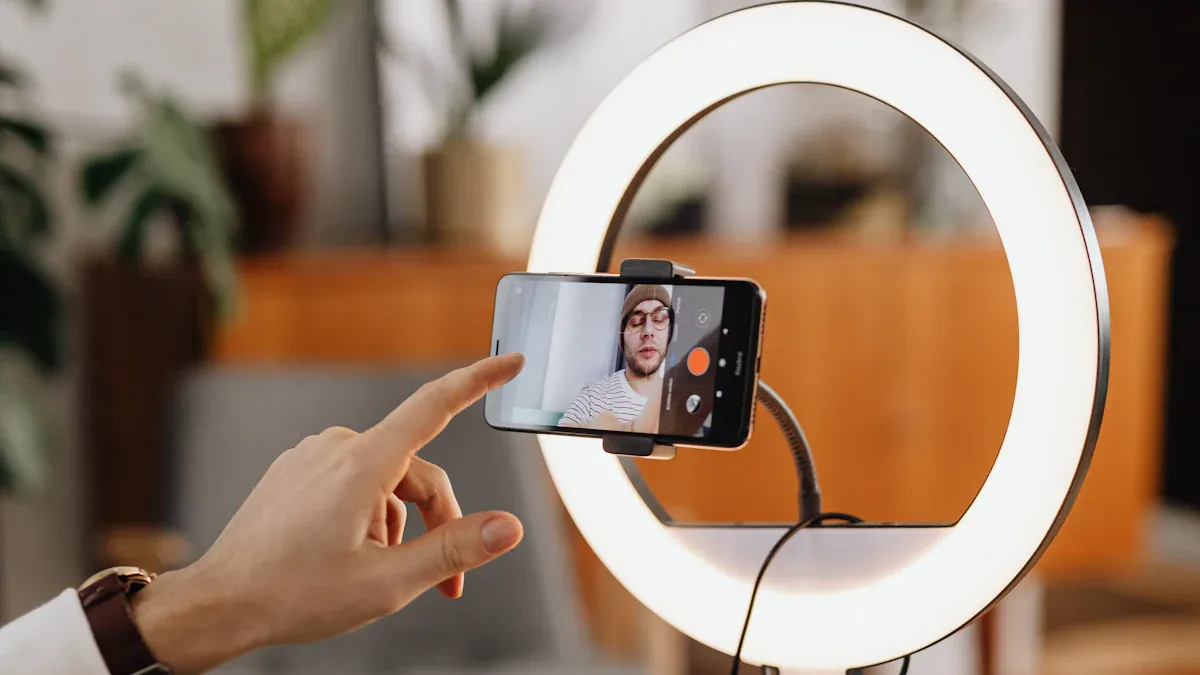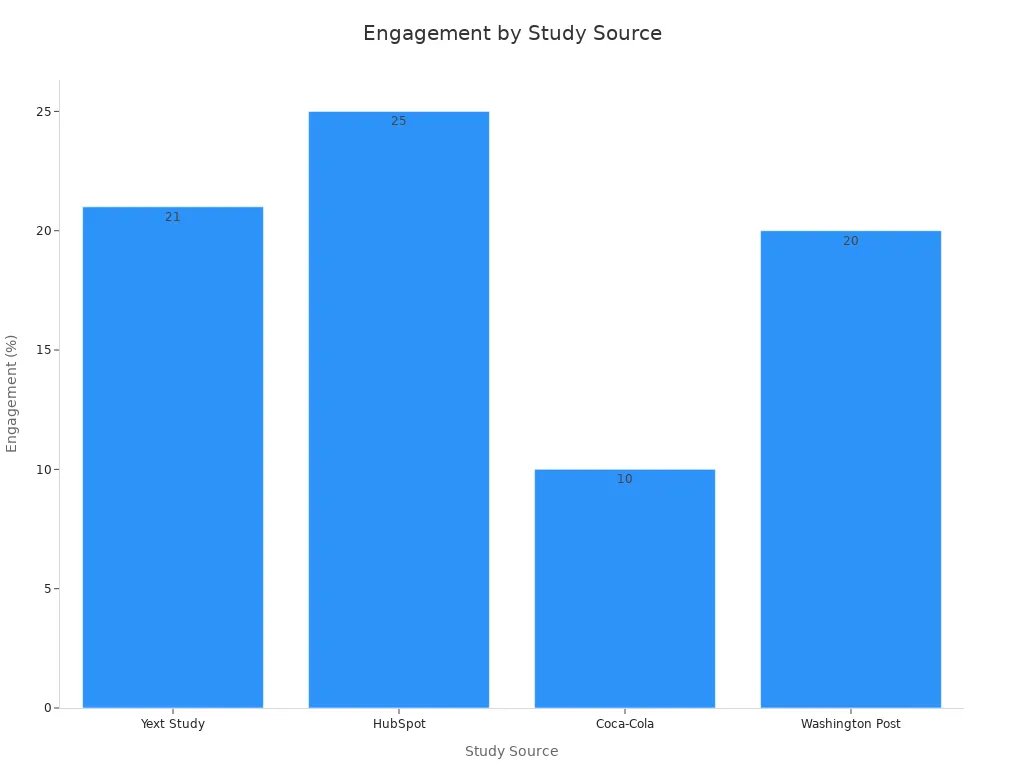Writing Visionary Content with AI Assistance

What makes content truly special? It’s content that inspires ideas, questions rules, and stays memorable. It’s creative and new, made to connect with people in real ways. But creating Writing Visionary Content can be hard sometimes, right? That’s where AI comes in.
AI can help you find trends, learn about your audience, and fix missing parts in your content plan. It saves time by giving ideas, making outlines, and offering new perspectives. You can also use AI to boost SEO, check how keywords are doing, and keep your content up-to-date. With these tools, you can focus on being creative while AI does the tough work.
By changing how you create content, AI lets you grow your ideas and make a bigger difference than ever before. Writing amazing content is now easier—and more fun.
Key Takeaways
AI helps you think of new ideas and cool topics. This makes writing more fun and easier to do.
AI saves time by doing boring tasks like fixing grammar and helping with SEO. This lets you focus on writing better messages.
AI helps you connect with more people. It studies data to make content that fits their interests and grabs attention.
Pick the right AI tools by learning what they do, setting clear goals, and using them fairly to gain trust.
Always check AI-made content for quality and originality. Look for copied work and have people review it to make it better.
Benefits of Writing Visionary Content with AI

Boosting Creativity and Innovation
AI can be like a creative teammate, helping you think differently. It gives new ideas, suggests cool angles, and explores topics you might skip. Think of it as a brainstorming buddy that never gets tired. That’s the magic AI brings to your work.
Using AI tools can show real results for creativity. For instance, AI writing can boost idea-making by 40% in the same time. It also makes creative tasks 30–45% more productive. Here’s a simple breakdown of how AI helps creativity:
Evidence Type | Statistic/Outcome |
|---|---|
Productivity Increase | 30–45% for tasks like content creation |
Idea Generation | 40% more ideas in the same time |
Average Productivity Gains by Sector | 15–20% in sectors using AI |
With AI, you can focus on improving and personalizing your content. Let the tech handle the hard parts of idea-making. This teamwork helps you create standout Writing Visionary Content that connects with your audience.
Enhancing Efficiency and Productivity
Time matters, and AI helps you save it. It handles boring tasks like fixing grammar, formatting, and SEO work. This lets you spend more time making meaningful messages.
AI also studies user behavior and content success. It shows what works and what doesn’t, so you can adjust your plans. Here’s how AI makes things faster:
Efficiency Metric | Description |
|---|---|
Automation | |
Data Analysis | AI studies user actions and content success, giving useful tips. |
Audience Targeting | AI customizes content, boosting engagement and clicks. |
Cost Reduction | AI lowers costs by creating content quickly and easily. |
Quality Improvement | AI checks grammar and SEO, cutting down editing time. |
AI speeds up your work, letting you make better content faster. This saves time and money, helping you do more with less effort.
Scaling Content Creation for Broader Impact
Reaching more people can feel tough, but AI makes it easier. It studies audience data to find trends and likes, helping you make content that connects. AI-made personalized content gets more attention, like 59% more email opens and 27% more clicks.
AI also improves search engine rankings, helping more people find your work. Here’s how AI helps you grow your content reach:
AI studies audience data to find trends and preferences for better content.
Personalized AI content gets 59% more email opens and 27% more clicks.
AI tools improve search rankings, making your content easier to find.
AI creates content 37% faster, helping you meet deadlines easily.
AI-made content is 78% more likely to rank for many keywords.
With AI, you can make Writing Visionary Content that connects deeply and reaches more people. It’s a powerful tool for anyone aiming to make a bigger impact.
Practical Steps for Writing Visionary Content with AI
Choosing the Right AI Tools for Your Goals
Picking AI tools can seem tricky, but it’s manageable. You just need a plan to match tools to your goals. Follow these steps to choose wisely:
Learn how AI tools work: Understand how AI creates content. This helps you use tools better.
Grow your AI knowledge: Explore how AI works in different areas. Think about ethical issues to use AI responsibly.
Be open and honest: Share how you’ll use AI. This builds trust and ensures fairness.
Double-check results: AI isn’t perfect. Always review its work for mistakes.
Follow rules: Make sure your AI use matches industry or school standards.
Think about ethics: Consider how AI affects jobs or information accuracy. Use it fairly.
Watch for risks: Stay alert to dangers like hacking. Protect your work from threats.
By following these tips, you’ll pick the right tools and use them responsibly.
Crafting Clear and Effective Content Briefs
A good content brief guides your AI tool. It tells the AI what you need for better results. Here’s how to make one:
Be clear: Add details like topic, tone, audience, and format. For example, if writing about "Writing Visionary Content," ask for a creative approach.
Set goals: What do you want the content to do? Say if it’s to teach, entertain, or convince.
Give examples: Share samples of content you like. This shows the AI your style.
Keep it simple: Don’t add too much info. Focus on what’s important.
A strong brief improves speed, reduces mistakes, and makes customers happier. For example:
Metric | Description |
|---|---|
Workflow efficiency scores | Tracks how fast and well content moves from idea to publishing. |
Error reduction rates | Measures how AI reduces mistakes by comparing errors before and after using it. |
Customer satisfaction scores | Checks how happy people are with content through feedback and support requests. |
Some companies see better campaigns and more clicks by automating brief reviews. It’s a small step with big results.
Refining AI-Generated Outputs for Quality and Originality
AI makes great content, but it’s not flawless. You need to improve its work for quality and originality. Here’s how:
Check for copying: Use tools to ensure the content is unique and legal.
Edit carefully: Always have a person review the content. Fix errors or anything odd.
Ask experts: If it’s a tough topic, get an expert to check for accuracy.
Here’s a quick look at quality checks:
Quality Assurance Measure | Description |
|---|---|
Avoiding Plagiarism and Copyright Infringement | Use tools to confirm the content is original and doesn’t break copyright rules. |
Implementing Human Review and Validation | People should review AI work to catch mistakes, biases, or missing details. |
Utilizing Subject Matter Experts (SMEs) | Experts ensure the content is accurate and follows current trends. |
Fixing AI content takes extra time, but it’s worth it. You’ll get polished, trustworthy, and impactful content that connects with your audience.
Real-World Examples of Visionary Content Created with AI

Personalized Storytelling Powered by AI
AI is changing how stories are told. It makes them personal and exciting. Imagine stories that feel made just for your readers. AI studies data to learn what people like and care about. Then, it creates stories that connect with them.
Here’s how it works step by step:
AI collects data from many sources for accuracy.
It finds patterns and trends to get useful ideas.
Using these ideas, AI builds an interesting story.
AI tools write stories in your brand’s style.
AI picks images to make the story more emotional.
Human editors check the content to keep it real.
AI tracks how readers react to improve future stories.
This method saves time and gets better results. Stories made with AI can increase email opens and clicks. It’s a big help for brands wanting to connect better.
Using Data for Better Content
Data is key to making great content, and AI makes it simple. By studying user actions and performance, AI shows what people want. This helps you create content that speaks to them.
Here are some real-world results:
Study Source | Engagement Increase | Impressions Increase |
|---|---|---|
Yext Study | 21% | 3.5% |
HubSpot | 25% | N/A |
Coca-Cola | 10% | N/A |
Washington Post | 20% | N/A |
AI doesn’t just study data—it helps you use it. It suggests topics, formats, and the best times to post. This ensures your content reaches the right people at the right time.

AI for Visual and Multimedia Content
Making great visuals is now easier with AI. Tools like DALL-E create images from text descriptions. Canva and Adobe Spark help you design without needing special skills. This lets everyone make amazing visuals.
Here’s how AI helps with visuals:
Speeds up production by 40%.
Cuts costs by 35%.
Boosts engagement by 28%.
Makes personalization better by 22%.
These tools save time and money while improving your content. Whether it’s social media posts, infographics, or videos, AI makes your visuals stand out.
Overcoming Challenges in AI-Assisted Content Creation
Fixing Bias in AI Results
AI learns from the data it’s trained on. If the data is biased, AI might give unfair answers. Sometimes, AI favors one group over another without meaning to. This happens when the training data isn’t diverse or the system misses these problems.
To solve this, companies improve how they collect data. They hire teams to check for bias and bring in experts like ethicists. Tools like fairness-focused AI platforms also help. These steps make AI-created content more fair and accurate.
Keeping Content Original and Avoiding Copying
AI creates content fast, but it’s important to check it’s unique. Relying too much on AI can lead to repeated ideas or copied work. For example, if many people use the same AI, content might look the same. This could harm your reputation or cause legal trouble. In 2023, Getty Images sued Stability AI for using copyrighted pictures without permission.
To prevent this, always check AI content for originality. Use tools to find plagiarism and review the work carefully. Follow copyright rules and give credit when needed. This keeps your audience’s trust and protects you legally.
Mixing Automation with Human Creativity
AI is great for boring tasks and data analysis, but it can’t replace creativity. It processes lots of data quickly but struggles with emotions or fresh ideas. That’s where humans come in. By combining AI’s speed with your creativity, you can make better content.
Companies using both AI and human input often get better results. Projects where humans improve AI content are faster and connect better with people. Think of AI as a helper, not a replacement. Together, you can balance automation and creativity perfectly.
AI is changing how people make content. It sparks ideas, saves time, and helps you reach more readers. By mixing AI’s speed with your own creativity, you can make content that shines.
Here’s how to use AI in your work:
Set clear goals for your projects.
Edit and improve AI-created content.
Pick tools to find patterns and useful data.
Match AI results to your goals.
Share insights with your team to work better together.
Fun fact: AI tools can save up to 200 hours of work yearly. This gives you more time to focus on being creative.
In the future, AI will get even smarter. Tools like machine learning and Natural Language Processing will make content more personal and fun. Imagine AI making videos or changing content instantly to fit your audience’s likes. These tools will help you connect with readers in exciting new ways.
FAQ
What is visionary content, and why is it important?
Visionary content is creative, fresh, and makes an impact. It inspires people, questions old ideas, and connects with readers. It’s important because it helps you stand out, gain trust, and build strong relationships online.
Can AI fully replace human creativity in making content?
No, AI can’t replace human creativity. It’s a helpful tool that gives ideas, tips, and saves time. You add feelings and originality that AI doesn’t have. Together, you can make amazing content.
How do I make sure AI-made content is unique?
Use tools to check for copied content. Always review AI work for repeated ideas or mistakes. Add your own thoughts to make the content special. This keeps your work fresh and reliable.
Are AI tools hard for beginners to use?
Not really! Many AI tools are easy to use for starters. Try simple ones like Grammarly or Canva first. Watch tutorials and practice often. You’ll get better quickly with time.
How does AI help me connect better with my audience?
AI studies what your audience likes and how they act. It helps you make content they enjoy. For example, AI suggests topics, picks the best times to post, and customizes messages. This increases engagement and builds stronger bonds.
See Also
Content Creation Showdown: Writesonic AI Meets QuickCreator
Transforming Blogging: The Impact of AI Content Builders
Achieving SEO Excellence: A Complete Guide with Perplexity AI
Streamlined Content Development: A Guide to Quick Creator's Update

